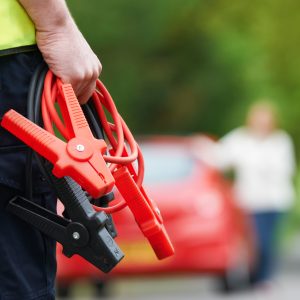Jump starting
24/7 emergency towing
0405 733 604

Jump Starting
Jump-starting a car involves using another vehicle’s battery to provide a temporary boost of power to the dead battery. The process requires jumper cables, a working vehicle with a fully charged battery, and safety precautions to prevent any accidents.
Jump Starting a Vehicle: A Comprehensive Guide to Safe and Effective Techniques
Jump starting a vehicle is a crucial skill that every driver should know. Whether it’s a dead battery due to extreme weather conditions or accidental battery drainage, knowing how to jump-start a car can save you from being stranded on the side of the road. In this comprehensive guide, we will cover the step-by-step process of jump starting a vehicle safely and effectively, along with essential tips to keep in mind.
Gather the Necessary Tools
Before attempting to jump-start a vehicle, ensure you have the required tools. These include a set of good-quality jumper cables and another vehicle with a fully charged battery. If you don’t have access to a working vehicle, consider asking for assistance from a fellow motorist or a roadside assistance service.
Ensure Safety First
Safety is paramount during jump starting. Park both vehicles in a safe and stable location, away from traffic. Turn off the ignition, lights, and any electronic devices in both cars. Put on the parking brakes, and if possible, wear safety gear such as gloves and safety goggles.
Identifying the Battery Terminals
To jump-start a car, locate the battery terminals on both vehicles. The battery will have two terminals: positive (+) and negative (-). They are usually marked with red and black covers respectively, or they may have the symbols (+) and (-) next to them.
Connecting the Jumper Cables
Now that you’ve identified the terminals, it’s time to connect the jumper cables:
- Start with the positive cable: Connect one end of the red (positive) cable to the positive terminal (+) of the dead battery.
- Attach the other end of the red cable: Connect the other end of the red cable to the positive terminal (+) of the working battery in the assisting vehicle.
- Connect the negative cable: Take the black (negative) cable and connect one end to the negative terminal (-) of the working battery.
- Final connection: Attach the remaining end of the black cable to an unpainted metal surface on the engine block of the vehicle with the dead battery. This grounding point helps prevent sparking.
- Jump-Starting the Vehicle
With the cables securely connected, it’s time to jump-start the vehicle:
- Start the assisting vehicle: Turn on the engine of the vehicle with the fully charged battery and let it run for a few minutes to transfer charge to the dead battery.
- Start the dead vehicle: Turn the ignition key of the dead vehicle and attempt to start it. If it doesn’t start immediately, give it a few more minutes to charge before trying again.
- Disconnecting the Jumper Cables
Once the dead vehicle starts, keep it running for a few minutes to ensure the battery gains sufficient charge.
- In reverse order: Remove the black cable from the unpainted metal surface on the engine block of the previously dead vehicle.
- Remove the black cable: Disconnect the other end of the black cable from the negative terminal (-) of the assisting vehicle’s battery.
- Remove the red cable: Disconnect the end of the red cable from the positive terminal (+) of the working vehicle.
- Final disconnection: Remove the remaining end of the red cable from the positive terminal (+) of the previously dead battery.
- Let the Engine Run
After jump starting, let the engine of the revived vehicle run for at least 15 minutes to recharge its battery fully.
Conclusion
Jump starting a vehicle is a practical skill that can get you out of challenging situations. With proper knowledge of the procedure and safety precautions, you can confidently assist yourself or others in starting a car with a dead battery. Remember always to carry a set of jumper cables in your vehicle and stay informed about the manufacturer’s guidelines specific to your car model. Safety, awareness, and preparedness are the keys to successfully jump starting a vehicle without damaging any electrical components or causing harm to yourself or others.